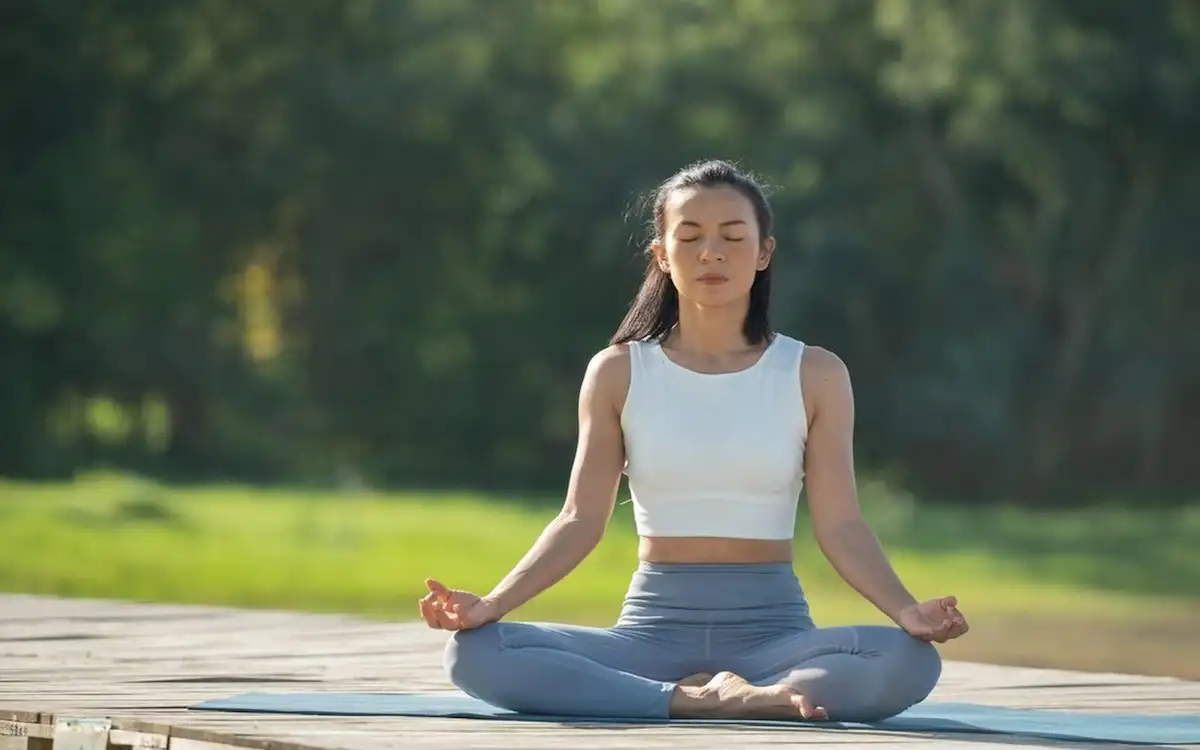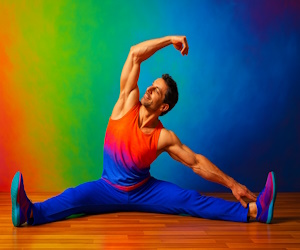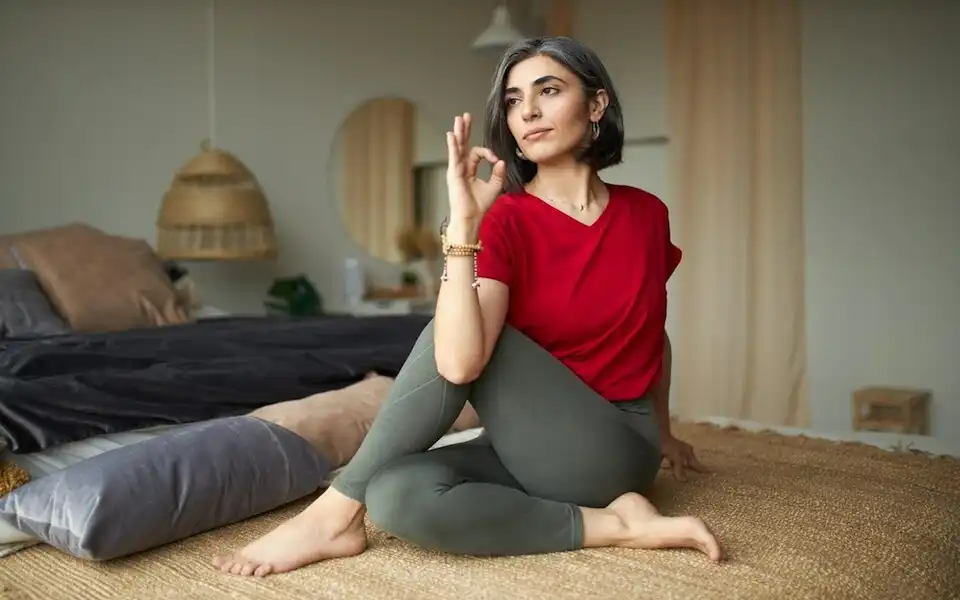Yoga isn’t just a workout, it is a practice that has been around for hundreds of years and connects the body, mind and spirit. Yoga has its roots in ancient India but it has become popular all over the world as a method to improve health, mental clarity and emotional balance. There is a lot of information in this article about how to start your yoga journey. It talks about the history and philosophy of yoga.
The Origins Of Yoga
Yoga comes from ancient India where it was practised as a spiritual discipline to clear the mind, become more self aware and keep the body healthy. The Sanskrit word yuj means to join or to unite. This is where the word yoga comes from. This stands for the link between the soul and the consciousness of all beings or between the body and the mind.
The Vedas which were written around 1500 BCE are the first religious texts to talk about yoga. These texts talked about early forms of yoga and meditation that paved the way for what we now call yoga. The Yoga Sutras which were written by the sage Patanjali around the year 200 BCE are the most important yoga texts. It explains what yoga is all about and gives an overview of the Eight Limbs of Yoga which people still follow today.
The Philosophy Behind Yoga
Physical poses, asanas , breath work, pranayama and mental discipline are all parts of yoga that work together to promote well being. Ahimsa which means nonviolence is at the heart of yoga philosophy. Mindfulness, balance and inner peace are important parts of yoga. The Eight Limbs of Yoga which Patanjali wrote are the philosophical basis of the practice.
- Yamas are moral rules like not being violent and telling the truth.
- Niyamas are personal practices such as being happy and clean.
- Asanas are positions for the body that prepare it for meditation.
- Pranayama are breath control techniques that regulate the flow of energy in the body.
- Pratyahara means putting away your senses which helps you focus on yourself.
- Dharana means concentration or putting your mind on one thing.
- Dhyana means meditation, a more focused and aware state of mind.
- Samadhi is the ultimate state of enlightenment and self realisation.
Through these steps yoga helps people become self aware and reach enlightenment in a state where the body, mind and spirit all work together in harmony.
Different Styles Of Yoga
Yoga has changed over the years but the basic ideas behind it have stayed the same. Each style has its focus and way of doing things. These are some well known types of yoga
- Hatha yoga is a gentle method to start yoga that focuses on breathing and body positions.
- Vinyasa yoga is known for the way the poses move quickly and in sync with the breath which makes the practice more athletic and energising.
- Ashtanga yoga is a tough type of yoga that is done by following a set of postures in a certain order usually very quickly.
- Bikram Yoga is a type of hot yoga done in a room that is heated to about 105F 40C. It is made up of 26 postures that are done in a certain order.
- Iyengar yoga focuses on alignment accuracy and using yoga blocks and straps to get into the right poses.
- Kundalini yoga is a spiritual practice that uses breathing exercises, chanting and meditation to wake up the energy at the base of the spine that has been sleeping.
- Restorative yoga is a therapeutic calming style that uses props to support the body in restful poses which helps the body relax and heal.
Each type of yoga has its benefits and you can pick the one that works best for you based on your fitness goals and personal tastes.
The Physical Practice Of Yoga
Asanas of yoga poses are the movements that align and stretch the body making it stronger, more flexible and better at keeping its balance. With some styles you may hold these poses for a few breaths or longer. Aligning yourself correctly is important to avoid injuries and get the most out of each pose.
Along with asanas pranayama or controlling your breath is an important part of doing yoga physically. Pranayama controls the breath which controls the flow of prana life force through the body. Controlled breathing can help lower stress, sharpen focus and improve how well the body does in asanas.
Yoga works out your whole body too. It works muscles that aren’t used much in regular gym workouts which helps improve posture and keep you from getting hurt. If you’re new to yoga you should start with easy poses like Downward Dog or Child Pose and work your way up to more difficult ones like Crow Pose or Wheel Pose.
How To Start Practising Yoga
It’s pretty easy to start doing yoga but you need to be consistent and know what your body can and can’t do. Here is a step by step guide
- Gather Your Equipment: You’ll need a yoga mat for comfort and stability. Also necessary are clothes that are comfortable and let you move around easily.
- Set Up Your Space: Whether you’re at home or in a studio, pick a peaceful place so you can focus.
- Start Simple: If you’re new to yoga choose a gentle style like Restorative or Hatha Yoga. You can start with a lot of classes or tutorials online.
- Take It Slow: Start with a few easy poses and pay attention to your breath and body alignment. As you get stronger and more flexible, move more slowly.
- Find a Teacher or Class: If you can go to a class with a certified teacher who can show you how to do the poses and make sure you’re standing up straight.
Common Challenges For Beginners
A lot of beginners have common problems like not being able to bend or breathe properly or getting frustrated with their progress. Remember that yoga is a personal practice and that you will get better over time. Here are some ways to get past common problems
- Don’t compare yourself to other people: Yoga isn’t about competing, it is about getting to know yourself. Follow your path instead of other people.
- Take Breaks: If a pose feels too hard, rest in a pose like Child Pose for a while to get your energy back.
- Stay Patient: It takes time to get stronger and more flexible so keep practising and give your body time to adjust.
The Mental And Emotional Benefits Of Yoga
People know that yoga is good for your mind and emotions. Mindfulness is a part of yoga that helps people feel less stressed, concentrate better and keep their emotions in check. The parasympathetic nervous system is activated by controlled breathing and certain body positions which helps you relax.
Yoga has also been shown to help people who are depressed, anxious or have trouble sleeping. People who practice regularly often feel calmer and at peace with themselves which is good for their mental health as a whole.
Integrating Yoga Into Daily Life
If you want yoga to really change your life you need to do it regularly. There are several ways to include yoga in your daily life
- Do Yoga for a Few Minutes Every Day: Doing yoga for just 10 to 20 minutes every day can make a big difference.
- Mindful Living: Use the mindfulness and nonviolence principles of yoga in the way you act and make choices every day.
- Combine with a Healthy Lifestyle: A healthy diet, good sleep habits and stress reduction techniques work best when done together with yoga.
Conclusion
Yoga is a practice that changes people and helps their bodies, minds and spirits. It helps people become more mentally clear, emotionally balanced and connected to themselves in addition to making them stronger and more flexible. The most important things about yoga no matter how experienced you are are to be consistent and mindful. Accept it as a journey that will last a lifetime and feel how much it affects your overall health.




 How Do You Do Yoga At Home Properly
How Do You Do Yoga At Home Properly  How Much Weight Can You Lose In A Month?
How Much Weight Can You Lose In A Month?  Why You Should Choose a Clean Eating Lifestyle
Why You Should Choose a Clean Eating Lifestyle  Tips on Getting Enough Sleep at Night
Tips on Getting Enough Sleep at Night  The Impact Processed Foods Have on Your Body and Life
The Impact Processed Foods Have on Your Body and Life